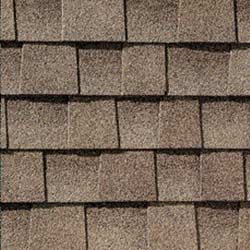How to Choose the Best Roofing Materials for Your Home
Published: 07/06/2021
As an event that only takes place, in many cases, once in a lifetime, having your home’s roof replaced is a significant process with equally significant benefits associated with it. A new roof adds value to your home, updates your curb appeal, and, most importantly, protects what’s inside your home from the weather.
If you’re a homeowner in need of a roof replacement, you may be shocked at the number of different types of roofing materials available. Each of the many different choices of roofing materials have their own set of characteristics that can produce a significantly unique result.
When choosing a roofing material, your roofer will take you through the various features of each to help you make your choice. They include:
Expected Lifespan
The average lifespans of each roofing material are as follows:
- Asphalt 3-tab shingles: 20 to 30 years
- Asphalt architectural shingles: 30 to 50 years
- Wood shingles: 20 to 30 years
- Metal roofs: 40 to 80 years
- Slate, concrete and clay tiles: 60 to 150 years
The actual lifespan of each material will vary depending on the climate in which you live, whether any significant weather events take place and how well you maintain your roof.
Cost
Of course, your roof is a large investment, so you will undoubtedly consider cost in your decision-making process. The average cost per square (100ft2) of the most common roofing materials typically fall into the following ranges:
- Asphalt 3-tab shingles: $170-$440
- Asphalt architectural shingles: $300-$1,500+
- Wood shingles: $480
- Metal roofs: $300-$1,800
- Slate, concrete and clay tiles: $800-$1,800
These price ranges will vary depending on your region’s average pricing, recent weather events, and, most recently, unforeseen incidents like a global pandemic and associated material shortages.
Potential Drawbacks
Though each material has a range of beneficial characteristics, they also each have potential drawbacks, depending on your home’s location, structure and style.

Asphalt shingles:
While more affordable than nearly any other roofing material, they also have the shortest lifespan of any other option. Asphalt shingles are Class-A fire resistant – a definite plus in the safety column – but are the most susceptible to wind uplift, impact damage, and in some cases, algae growth. Finally, though asphalt shingles are recyclable, they’re not exactly eco-friendly to produce, as their production creates significant greenhouse gas emissions.

Wood shingles:
Wood roof shingles are longer lasting than asphalt but are on the more expensive side in terms of roofing materials. Their durability and lifespan also depend on several factors, including your local climate, which type of wood is used and the thickness of the shingles. While wood shingles are aesthetically pleasing to homeowners who prefer a natural look, they do require additional maintenance, including periodic fungicide and fire retardation treatments. In some counties, wood shingles may be banned altogether for fire concerns. They do, however, offer a lightweight alternative while offering protection against moisture – though they are vulnerable to mold, mildew and algae.

Metal panels/shingles:
Metal roofing can be composed of different materials, including steel, aluminum, and copper, to complement nearly any style of home. It’s even possible to get your metal roof reinforced with a zinc, rubber or paint coating for added strength and weatherproofing. Metal roofs have an impressively long lifespan, but it does come with a significant upfront cost. The installation must also be performed by an experienced, licensed metal roofer. Once attached, a metal roof is fire-resistant, can lower your insurance premiums and will increase the value of your home. Metal’s inherent solar reflectance can also help offset some of your monthly energy costs.

Slate, concrete, and clay tile roofing:
Tile roofing is resistant to fire, pests and rot, and can last up to 100 years with proper care. While tile roofing is one of the most expensive options, its lifespan alone can reconcile the initial cost. Furthermore, tile roofing can play a large role in reducing your energy bills. One thing to watch out for, however, is the sheer weight of tile roofing. It’s important to have your home evaluated by a structural engineer to make sure your home’s framework can support the weight of the tiles if you’re planning to switch from a different type of roof. Concrete, slate and tile provide a natural aesthetic and are fairly easy to repair should they endure any impact damage.

Alternatives
If your heart is set on a certain look or feel, but the material you want is out of reach due to any of the constraints listed above, you may want to consider synthetic or composite materials. Composite shingles can run anywhere from $110 to $1,600 per square depending on the grade you choose. Composite shingles can imitate wood shake, clay tiles, or slate shingles and are lighter weight, tend to have a longer lifespan and are more affordable. They’re often made from recycled materials, rendering them much more eco-friendly than some of their authentic counterparts.
AKVM is your local Sarasota-Bradenton residential and commercial roofer!
Our experienced roofers will be happy to explain the pros and cons of different roofing options, and we’ll be available every step of the way to answer all of your questions. We understand that choosing a reliable & knowledgeable contractor is the most important aspect of any roofing project, and we want to assure you that you can relax knowing your roof is in the best of hands.
Call today to schedule a free, no-obligation inspection and quote: 941-727-3996
REQUEST A
FREE ESTIMATE

See What Our Customers Are Saying
Recent Posts
Maximizing Energy Efficiency
Roof Inspections 2024
Prepare Your Roof For Spring
Lifespan of Different Roofing Materials
How Roof Type Affects Value
Choosing Materials for Extreme Weather
Guide to Cleaning Gutters Safely
Emergency Roof Repair: What to do until the professionals arrive
New Roof Tech: GAF Solar Energy Shingles
How to Minimize Fire Hazards on Roof
How Florida Heat Affects Roof
Top Benefits of Shingle Roofs
Solar Options for Florida Homes
What to do if Hurricane Damages Roof
2023 Hurricane Season Roof Preparation Checklist
Does Adding Solar Increase Your Home's Value?
What it takes to be a GAF Master Elite Contractor
How To Choose The Right Roof Shingles
How To Choose The Right Windows & Doors For Your Home
How To Choose Solar Energy System For Your Home
What To Do If Tree Falls On Your Roof
Residential Roof Spring Cleaning Checklist
Should You Replace Your Gutters When You Replace Your Roof?
New Homeowners' Guide To Roof
Roof Warranties
2023 Solar Energy Trends
Time To Replace Front Door
Roofs With Curb Appeal
Roof is Leaking During Storm
New Roof vs. Repair
Roof-Mounted Solar Panels
New Roof FAQs
Galvanized Vs. Galvalume
Why Roof Vents?
Press Release: April 19, 2022
Metal Roof Fasteners: When and Why They Need to Be Replaced
Myth vs. Fact: 5 misconceptions about metal roofing
Flat Roofing Options
Due For A Replacement
Commercial Roofing Systems




